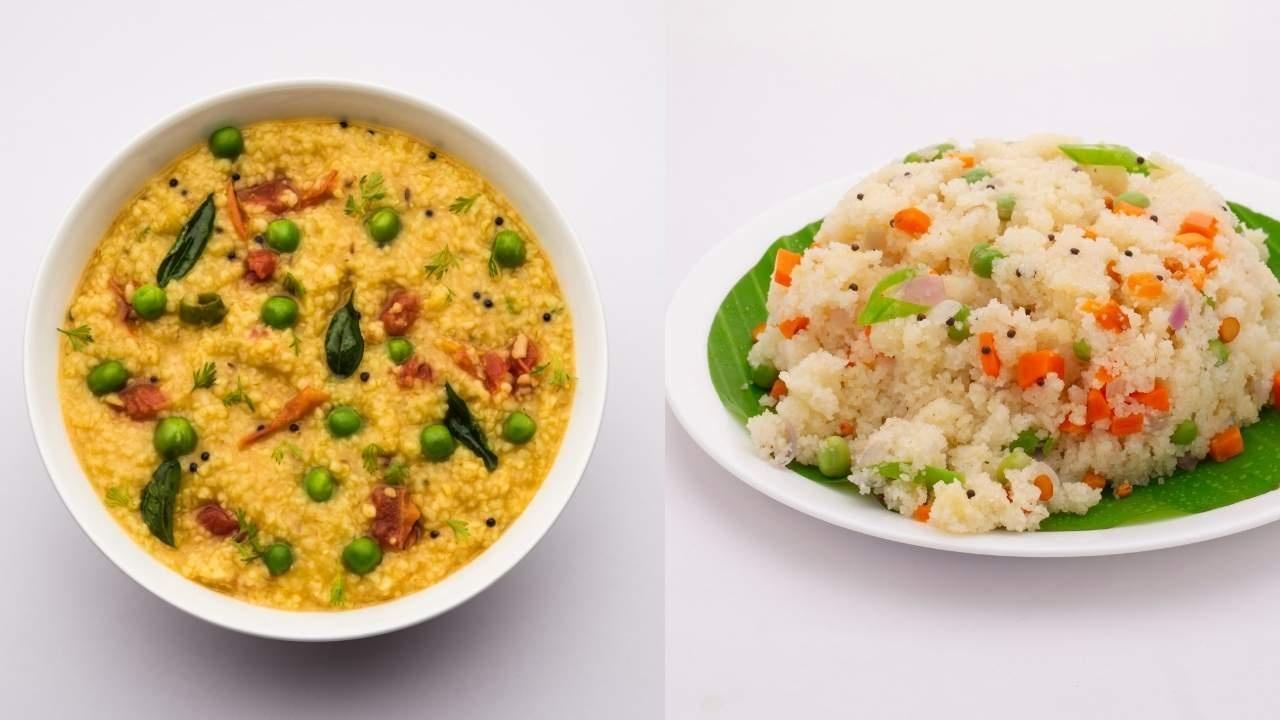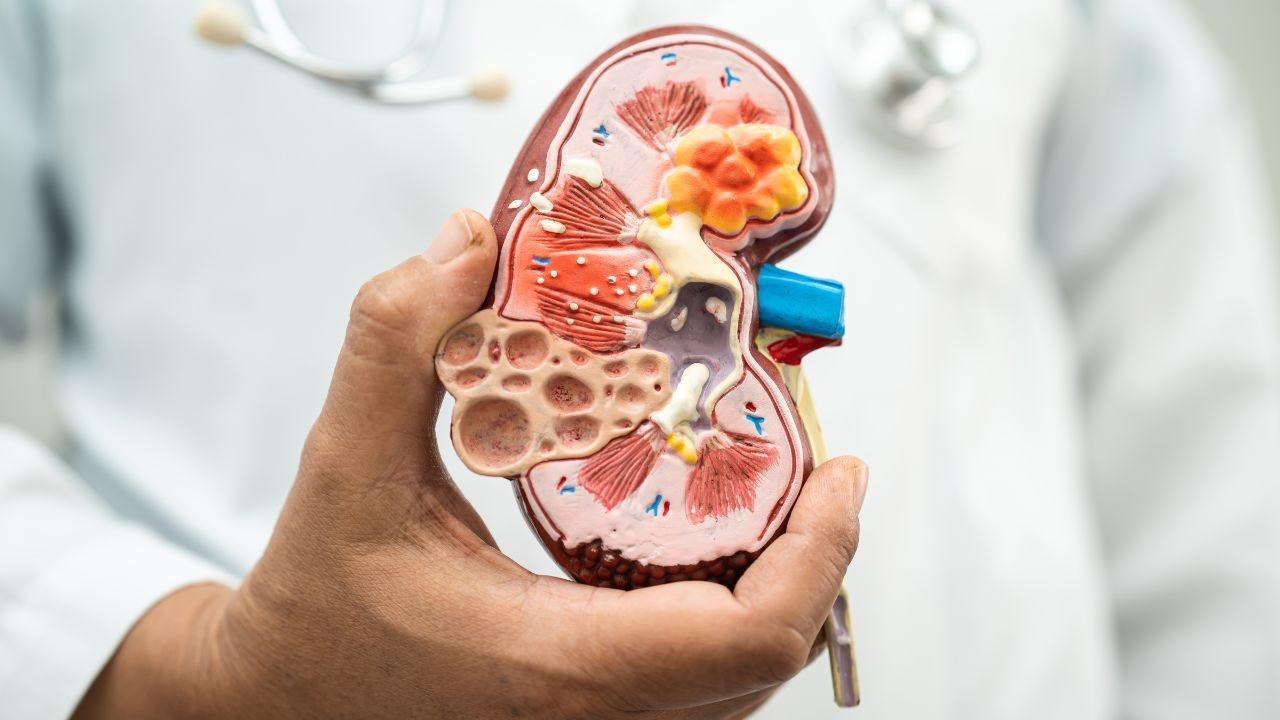
Join 10k+ people to get notified about new posts, news and tips.
Do not worry we don't spam!

Post by : Mikael Ariff
Effective weight management involves more than just exercise or caloric counting; it starts with your morning meal. The first dish you consume significantly influences how your body processes fats, digests food, and maintains energy levels throughout the day. For many, the debate often revolves around two popular breakfast options: Dalia (broken wheat porridge) and Upma (semolina dish).
Both are traditional, easy-to-make, and delicious. However, if you're keen on weight loss and fitness, which one should you opt for? Let’s dive into both meals and find out which is a superior choice for weight management and overall wellness.
A strategic breakfast nourishes your body instead of just staving off hunger. It is vital for energy levels, metabolic enhancement, and sustained fullness until lunchtime.
Nutritionists recommend that the ideal morning plate should:
Be high in fiber and protein.
Provide consistent energy without causing drowsiness.
Use minimal oil and sugar.
Keep you satiated in order to prevent snacking before lunch.
Both Dalia and Upma can fulfill these criteria, but their preparation methods and added ingredients can significantly alter their effects.
What is Dalia?
Dalia, commonly referred to as broken wheat, results from crushing whole wheat grains. Since it's unrefined, it retains essential nutrients and fiber, making it one of the healthiest grain choices. You can prepare it sweetly with milk and nuts or savory with vegetables and spices.
How Dalia Aids in Weight Loss:
High in fiber: Dalia digests slowly, helping you feel full longer and preventing overeating.
Low glycemic index: It doesn’t spike blood sugar levels quickly, making it suitable for diabetics and calorie-watchers.
Nutrient-dense: It's a great source of iron, magnesium, and B vitamins—key players in energy and metabolism.
Versatile: You can enjoy it in multiple ways—sweet, savory, or even in soup form.
Calories:
A medium bowl (approximately 150–200g) of vegetable dalia has about 150–180 calories, depending on added oil or ghee.
How to Enhance Its Health Benefits:
Minimize oil usage.
Add colorful veggies like carrots, beans, peas, and spinach.
For added protein, mix in moong dal, paneer, or tofu.
This approach makes Dalia not only satisfying but also a rich source of essential nutrients for an active lifestyle and steady fat loss.
What is Upma?
Upma is crafted from semolina (sooji or rava), a coarser wheat product. It’s a favored breakfast dish in South India, often flavored with onions, curry leaves, and mustard seeds.
Benefits of Upma—Yet Not Without Drawbacks:
Gentle on the stomach: Excellent for individuals with mild digestive concerns.
Quick to make: Ready in under 15 minutes.
Low in fat: When prepared with little oil, it remains light on the stomach.
Calories:
A bowl (around 150g) of vegetable upma generally has about 180–200 calories.
However, a word of caution:
Semolina is a refined grain, missing out on the fiber-rich outer bran. This renders it less filling than dalia, often leading to quicker feelings of hunger.
How to Prepare Upma Healthier:
Opt for coarse rava instead of fine.
Add vegetables like capsicum, peas, carrots, and tomatoes.
Use olive or coconut oil rather than ghee.
Top with flaxseeds or roasted nuts for added nutrition.
| Nutrient/Factor | Dalia (Broken Wheat) | Upma (Semolina) |
|---|---|---|
| Grain Type | Whole grain (unrefined) | Refined grain |
| Fiber Content | High | Moderate to low |
| Protein Content | Moderate | A bit less |
| Digestion Ease | Slow, prolongs fullness | Quick, hunger returns sooner |
| Glycemic Index | Low | Medium to high |
| Calories (per bowl) | 150–180 | 180–200 |
| Best For | Sustained energy & fat loss | Quick, light meal |
| Overall Winner | ⭐ Dalia | ✅ Upma (for busy schedules) |
If fat loss and a sense of fullness are your primary objectives, Dalia is the frontrunner. Its high fiber and whole grain attributes make it outstanding for digestion and long-term weight management.
That said, Upma isn't a poor option—especially when time is of the essence. When prepared wisely with vegetables and little oil, it can certainly fit into your healthy breakfast options.
Pro tip:
You needn't restrict yourself to just one. Relish Dalia when optimal nourishment is your goal and Upma when time is tight but you still want something savory.
Limit oil usage: Just ½ teaspoon of olive or coconut oil per serving suffices.
Increase vegetable content: Spinach, peas, and carrots enrich fiber and vitamins.
Combine with protein: Enjoy alongside yogurt, boiled eggs, or paneer for improved satiety.
Avoid ready-made mixes: Pre-packaged options often contain preservatives and excess sodium.
Pace your portions: A medium bowl (150–200g) is ideal for breakfast.
Nutritionists recommend incorporating complex carbohydrates, fiber, and protein to kickstart your metabolism.
Here’s how to enhance your morning meal:
Add chia or flax seeds for omega-3 fatty acids.
Drink green tea or warm water with lemon for better digestion.
Skip sugary beverages and fried snacks with your meal.
These simple modifications can make both Dalia and Upma healthier and more effective in achieving your fitness aims.
✅ Opt for Dalia if you prefer:
Long-lasting energy
Enhanced digestion
Sustained weight loss
✅ Choose Upma if you're looking for:
A light, rapid meal
Easy digestibility
A quick breakfast option on busy days
Both dishes can contribute to a healthy lifestyle—what’s key is balance and consistency. Pair them with physical activity, proper hydration, and mindful eating for optimal outcomes.
Both Dalia and Upma are traditional, nutritious breakfast selections. However, when it comes to sustainable weight loss, Dalia is the standout. It boasts a higher fiber content, is more satisfying, and helps mitigate unnecessary snacking throughout the day.
Keep in mind, weight loss is not solely about eating less; it’s about eating intelligently. Focus on consuming whole, fresh, and nourishing foods while avoiding processed options.
Next time you’re faced with the choice between Dalia and Upma, consider nourishment over mere calories. A comforting, homemade bowl of vegetable Dalia might be the simple shift that accelerates your health goals.
This article serves only for informational purposes and is not a substitute for professional medical or dietary advice. Readers are encouraged to consult a qualified nutritionist or healthcare provider before making significant dietary changes. Individual outcomes may vary according to age, health status, and lifestyle choices.










Paramount+ to Stream PBR’s 'Unleash the Beast' in New Five-Year Deal
Paramount+ will stream PBR’s 'Unleash the Beast' across the U.S. starting this December under a five

Zohran Mamdani Clinches NYC Mayoral Seat as Victory Speech Blends Politics and Bollywood
Zohran Mamdani won New York City's mayoral race, becoming the city's first Muslim and South Asian ma

India Wins First Women’s World Cup 2025 Title
India lifts its maiden Women’s World Cup 2025 title! Harmanpreet Kaur’s team stuns South Africa in a

Manuel Frederick, 1972 Olympic Bronze Goalkeeper, Dies at 78
Manuel Frederick, a member of India’s 1972 Olympic bronze hockey team, has died in Bengaluru at 78 a

Muhammad Hamza Raja Wins IFBB Pro Card Puts Pakistan & UAE on Global Stage
Pakistani bodybuilder Muhammad Hamza Raja earns IFBB Pro Card in Czech Republic, showcasing Dubai’s

Shreyas Iyer’s Recovery Underway After Spleen Laceration in Sydney ODI
Shreyas Iyer is recovering after a spleen laceration sustained while taking a catch in the Sydney OD